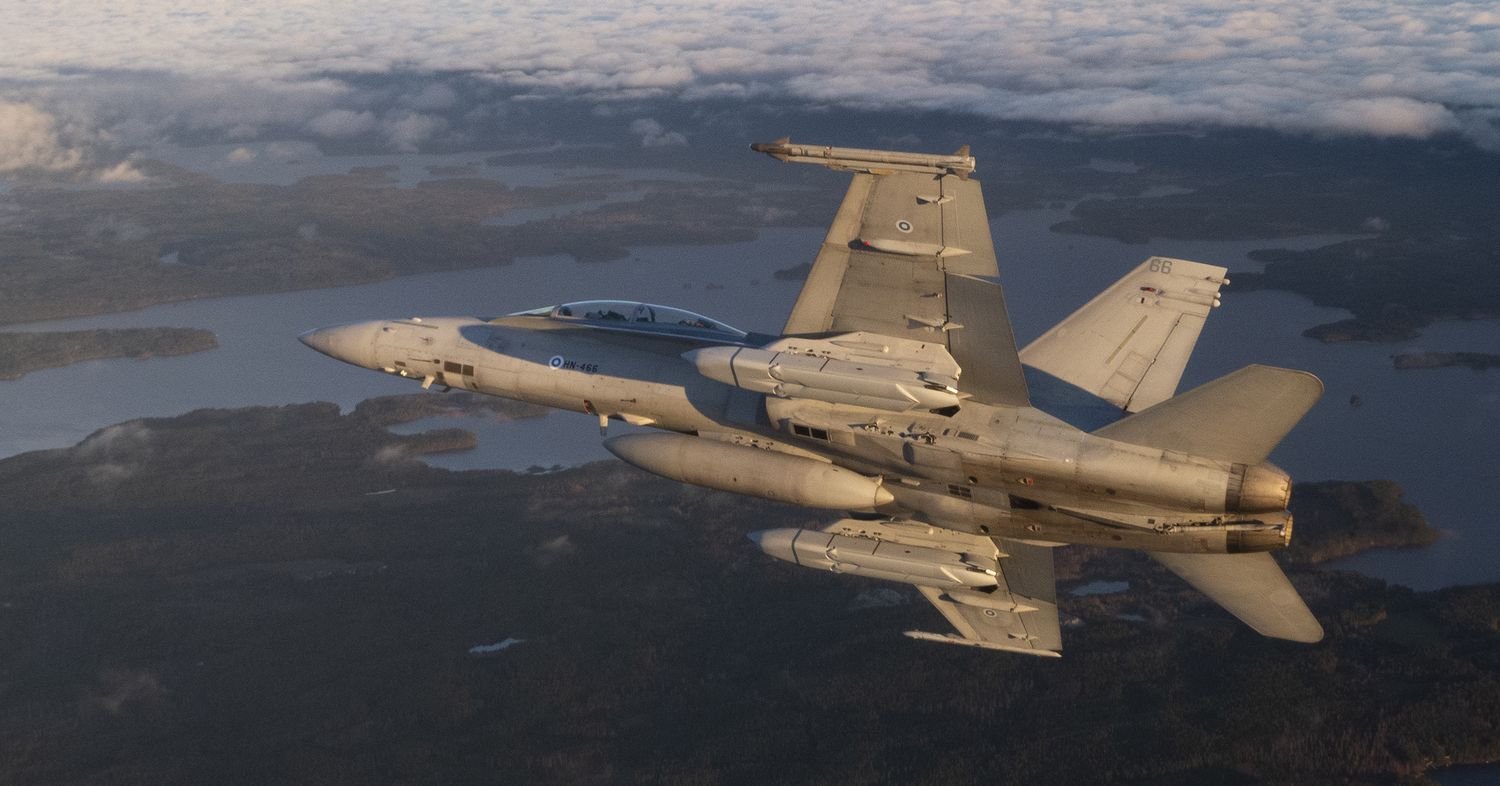Today, April 4, 2023, Finland officially joined NATO Air Command, becoming the 31st member state. So what is the strength of its Air Force?
Having abandoned its historical position of strategic neutrality (as a result of the Russian invasion of Ukraine), Finland formally joined the alliance today, thus complicating Russia’s security situation.
AIRCOM marked the accession of #Finland ?? to the Alliance as its 31st member in a flag-raising ceremony today
Welcome to the #NATO Team @FinMissionNATO!
Read more: https://t.co/YvDKCGarW4 pic.twitter.com/KNOUvUF8lE
— NATO Air Command (@NATO_AIRCOM) April 4, 2023
What is the contribution of Finnish air power to NATO?
Fighter aircrafts
Currently, the Finnish Air Force’s combat capability is centered around more than 50 single-seat F/A-18C Hornets and 7 twin-seat F/A-18Ds.
The Finnish Hornets have undergone several upgrades over the years, to keep them at a level in line with contemporary threats, and today they are a very powerful weapon system, as they can be armed with AIM-120C-7 AMRAAM medium-range air-to-air missiles, AIM-9X Sidewinder short-range air-to-air missiles and the powerful AGM-158 Joint Air-to-Surface Standoff Missiles, capable of destroying ships and ground installations up to almost 400 km away.
But Finland will have an even more deterrent Air Force, as it decided to replace its Hornet, with the Lockheed Martin F-35A Block 4, whose 64 contracted units (for 9.4 billion euros) should start to be delivered from 2025.
Transport and special mission aircraft
The Finnish Air Force bases its tactical transport capabilities on three Airbus C295Ms, one of which also performs electronic intelligence functions through the installation of specialized equipment.
In addition, Finland is a partner in the European Heavy Airlift Wing (HAW), consisting of three C-17 Globemaster IIIs. However, this does not represent a novel contribution, as several NATO member countries are also partners and operate them jointly.
Helicopters
As the most significant asset in this section, the Finnish Army has about twenty NH90 transport helicopters, in their TTH ground operation version. The actual operational status of these aircraft is unknown, but it is worth noting that Finland’s neighbors, such as Norway and Sweden, decided to replace them with American Blackhawks after suffering years of technical problems that seriously hampered their availability.
NATO more than doubled its border with Russia
In addition to quantifiable aspects such as the number of aircraft joining NATO’s air power, Finland’s membership has a very significant strategic impact, as Russia increases its common border with NATO member countries from approximately 1,200 km to more than 2,500 km, greatly complicating its territorial defense.

An eventual NATO offensive from Finland against the Murmansk Corridor (700 km of rail and land routes) could cut off communications and logistics between Moscow and the important port of Murmansk, as well as all the military bases on the peninsula, such as the port of Severomorsk, the base of the Northern Fleet and where Russia hosts a large part of its nuclear attack submarine force. The rugged and forested terrain typical of that area would prevent Russia from mounting an effective defense against the deployment of heliborne special operations forces.
The situation on Russia’s northwest flank will become even more complex with the eventual joining of Sweden to the Atlantic Alliance (halted for now by Turkish reluctance), as it would end up transforming the Baltic Sea, the Russian Navy’s main route to the Atlantic, into a private NATO lake.






Comentarios
Para comentar, debés estar registrado
Por favor, iniciá sesión